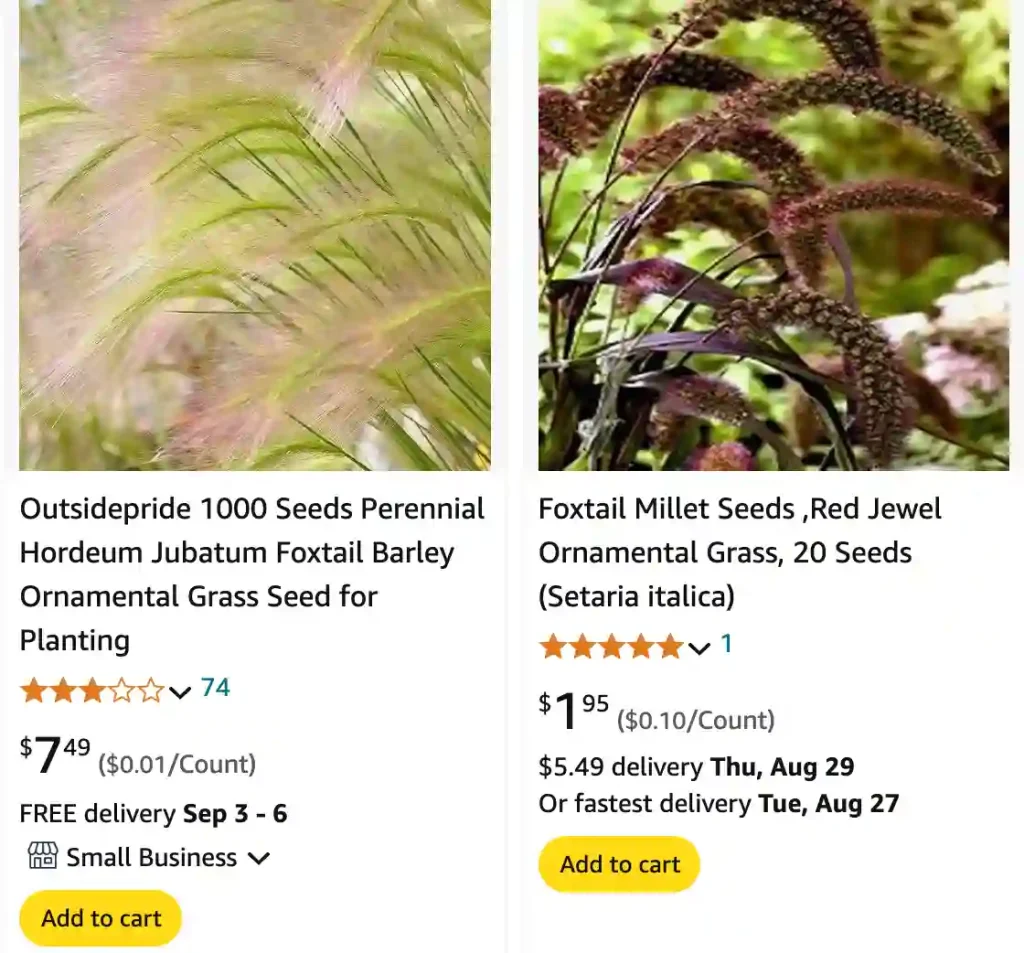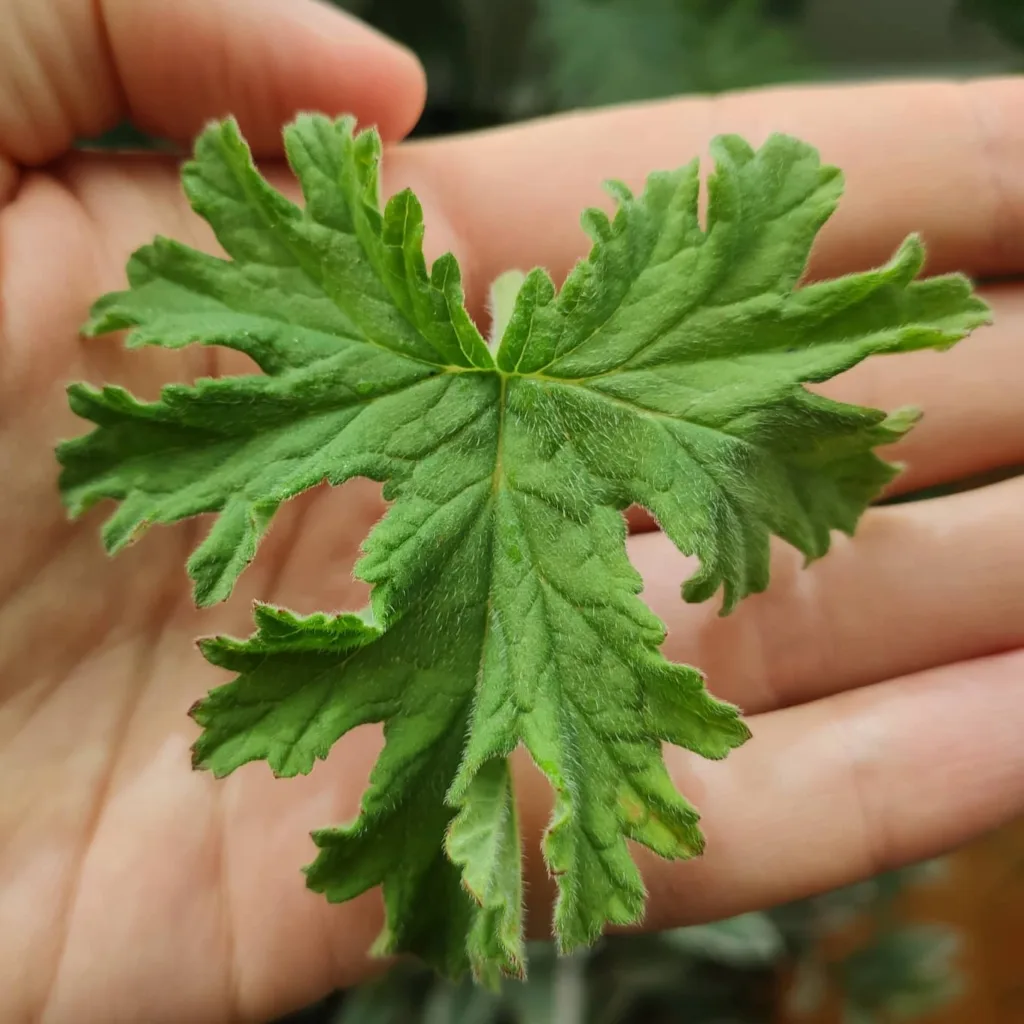
What Is Foxtail Grass?
Foxtail Grass is a common name of grass in the genus Alopecurus from Poaceae family. It’s recognized for its distinctive, bushy seed heads that resemble a fox’s tail. This grass is often found in weedy areas and is known for its rapid growth and ability to spread quickly. Its appearance can vary slightly depending on the species, but it typically features tall, coarse stems and dense clusters of bristly seed heads.
Plant Family: 822 Genera in Poaceae
Alopecurus species
- Alopecurus aequalis Sobol.
- Alopecurus albovii Tzvelev
- Alopecurus alopecuroides (L.) L.J.Gillespie, Cabi & Soreng
- Alopecurus anatolicus Dogan
- Alopecurus apiatus Ovcz.
- Alopecurus arundinaceus Poir.
- Alopecurus aucheri Boiss.
- Alopecurus baptarrhenius S.M.Phillips
- Alopecurus bonariensis Parodi & Thell.
- Alopecurus borii Tzvelev
- Alopecurus bornmuelleri Domin
- Alopecurus brachystachyus M.Bieb.
- Alopecurus × brachystylus Peterm.
- Alopecurus bulbosus Gouan
- Alopecurus carolinianus Walter
- Alopecurus creticus Trin.
- Alopecurus cucullatus (L.) Raspail
- Alopecurus dasyanthus Trautv.
- Alopecurus davisii Bor
- Alopecurus geniculatus L.
- Alopecurus gerardi Vill.
- Alopecurus glacialis K.Koch
- Alopecurus goekyigitianus Cabi & Soreng
- Alopecurus × haussknechtianus Asch. & Graebn.
- Alopecurus heleochloides Hack.
- Alopecurus himalaicus Hook.f.
- Alopecurus hitchcockii Parodi
- Alopecurus japonicus Steud.
- Alopecurus laguroides Balansa
- Alopecurus lanatus Sm.
- Alopecurus longearistatus Maxim.
- Alopecurus magellanicus Lam.
- Alopecurus × marssonii Hausskn.
- Alopecurus mucronatus Hack.
- Alopecurus myosuroides Huds.
- Alopecurus nepalensis Trin. ex Steud.
- Alopecurus × plettkei Mattf.
- Alopecurus ponticus K.Koch
- Alopecurus pratensis L.
- Alopecurus rendlei Eig
- Alopecurus saccatus Vasey
- Alopecurus setarioides Gren.
- Alopecurus textilis Boiss.
- Alopecurus turczaninovii O.D.Nikif.
- Alopecurus × turicensis Brügger
- Alopecurus tzvelevii V.A.Agaf., Laktionov, Yu.E.Alexeev & Mavrodiev
- Alopecurus utriculatus Banks & Sol.
- Alopecurus vaginatus (Willd.) Pall. ex Kunth
- Alopecurus × winklerianus Asch. & Graebn.
What Does Foxtail Grass Look Like?
Foxtail Grass is easily identifiable by its bushy, spiky seed heads, which can range in color from green to a golden brown as they mature. The seed heads resemble a fox’s tail, which is how the grass gets its name. The stems are usually upright, with the grass growing in clumps. Its leaves are narrow and lance-shaped, with a rough texture that can feel prickly to the touch.
Where Is Foxtail Grass Found?
Foxtail Grass is native to various regions around the world, including North America, Europe, and Asia. In the U.S., it’s commonly found in disturbed soils, roadside ditches, pastures, and open fields. It thrives in a range of environments but prefers sunny locations with well-drained soil.
Is Foxtail Grass Perennial or Annual?
Foxtail Grass is primarily an annual plant, meaning it completes its life cycle in one growing season. However, some species can behave as perennials in certain conditions, particularly in warmer climates where they may persist for multiple seasons.
Does Foxtail Grass Grow in Texas?
Yes, Foxtail Grass does grow in Texas. The state’s warm climate and varied soil types provide an ideal environment for this grass. It can often be found in pastures, along roadsides, and in disturbed areas throughout the region.
Does Foxtail Grass Grow in Ohio?
Foxtail Grass can also be found in Ohio. The grass is adaptable and can grow in a range of climates, including Ohio’s temperate zone. It’s commonly seen in fields, along highways, and in other open areas.
Foxtail Grass vs Cheatgrass
Both Foxtail Grass and Cheatgrass are weedy grasses that can be problematic in pastures and agricultural fields. Cheatgrass (Bromus tectorum) is more invasive and tends to spread more aggressively than Foxtail Grass. While both grasses can create challenges for land management, Cheatgrass is often more troublesome because it can outcompete native plants and significantly alter ecosystems.
Foxtail Grass vs Crabgrass
Foxtail Grass and Crabgrass (Digitaria spp.) are often confused due to their similar growth habits and appearance. However, Foxtail Grass has distinctive, bushy seed heads, while Crabgrass has a more sprawling, prostrate growth habit. Crabgrass typically thrives in lawns and garden beds, while Foxtail Grass is more common in weedy areas and pastures.
Foxtail Grass vs Timothy Hay
Foxtail Grass and Timothy Hay are often compared because both are used as forage for animals. Timothy Hay (Phleum pratense) is a preferred feed for many livestock, including horses and rabbits, due to its nutritional value and digestibility. Foxtail Grass, on the other hand, is less desirable as hay due to its coarse texture and potential to cause irritation or injury to animals if consumed in large amounts.
Can Horses Eat Foxtail Grass?
Horses can eat Foxtail Grass, but it’s not ideal for them. The bristly seed heads can cause discomfort and potential injury to their mouths and digestive tracts. It’s generally better to avoid feeding horses Foxtail Grass and stick to more suitable forages like Timothy Hay or alfalfa.
Do Cows Eat Foxtail Grass?
Cows may graze on Foxtail Grass, but it’s not the best option for them. The coarse texture and potential for seed head irritation can make it less desirable compared to other forage options. It’s important to monitor the quality of the forage cows consume to ensure their health and well-being.
Do Deer Eat Foxtail Grass?
Deer may eat Foxtail Grass, especially if other food sources are scarce. However, it’s not a preferred food for them. Deer generally favor more tender and nutritious plants, so Foxtail Grass is often a last resort in their diet.
Does Foxtail Grass Make Good Hay?
Foxtail Grass is not considered good for hay production. Its coarse texture and tendency to develop hard seed heads make it less desirable for hay. Animals can find it difficult to eat and digest, which can lead to health issues.
Does Vinegar Kill Foxtail Grass?
Vinegar can be used as a natural herbicide to kill Foxtail Grass, particularly when applied in high concentrations. However, it may not be as effective as chemical herbicides and can also affect other plants in the area. It’s best used as a spot treatment rather than a widespread solution.
How to Get Rid of Foxtail Grass?
To get rid of Foxtail Grass, you can use a combination of methods. Hand pulling can be effective for small infestations, while mowing before the grass goes to seed can help reduce its spread. Herbicides specifically designed for grassy weeds can also be effective, but be sure to follow application instructions carefully to avoid damaging desirable plants.
How to Care for Foxtail Grass?
If you need to manage Foxtail Grass in a garden or lawn, regular mowing and proper lawn care can help control its growth. Maintaining healthy soil and promoting competitive plants can also reduce the prevalence of Foxtail Grass.
How to Propagate Foxtail Grass?
Foxtail Grass primarily spreads through seed dispersal. If you want to propagate it intentionally, simply collect the seeds from mature plants and sow them in well-prepared soil. Keep in mind that Foxtail Grass can be invasive, so consider the ecological impact before planting.
What to Plant with Foxtail Grass?
If you’re planting Foxtail Grass in a garden or landscaping setting, consider pairing it with other grasses or plants that can complement its growth and reduce its invasiveness. Plants like clover or native wildflowers can help balance the ecosystem and provide habitat for beneficial insects.
Is Foxtail Grass Toxic?
Foxtail Grass itself is not considered toxic, but its seed heads can be problematic for animals. The bristles can cause irritation or injury to the mouth and digestive tract of grazing animals. It’s important to monitor for these issues and remove Foxtail Grass from pastures or feed if necessary.
Common Problems with Foxtail Grass
Common problems with Foxtail Grass include its tendency to become invasive and outcompete other plants. Its seed heads can also be a nuisance for animals, causing physical irritation and potential health issues. Regular management and control measures are essential to keep Foxtail Grass in check.
If i die, water my plants!



